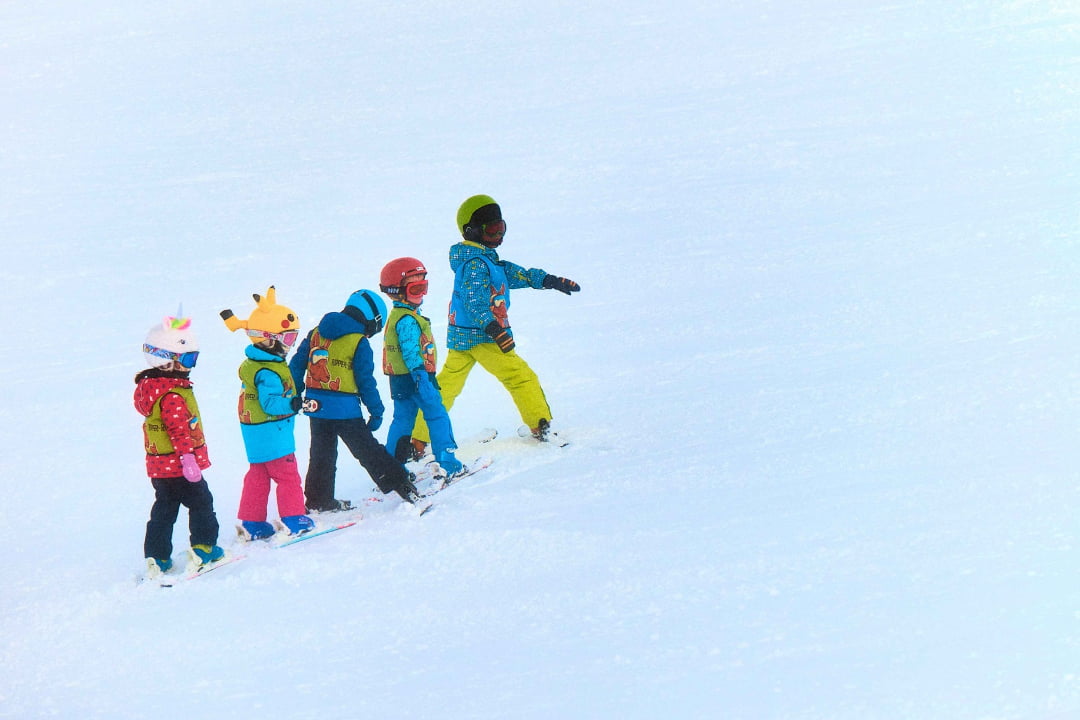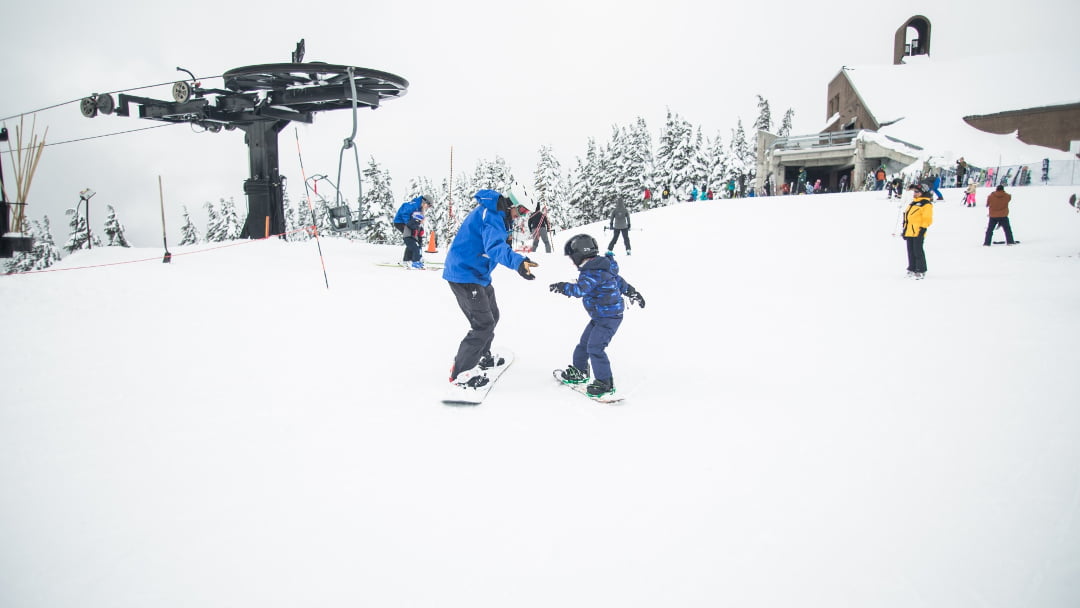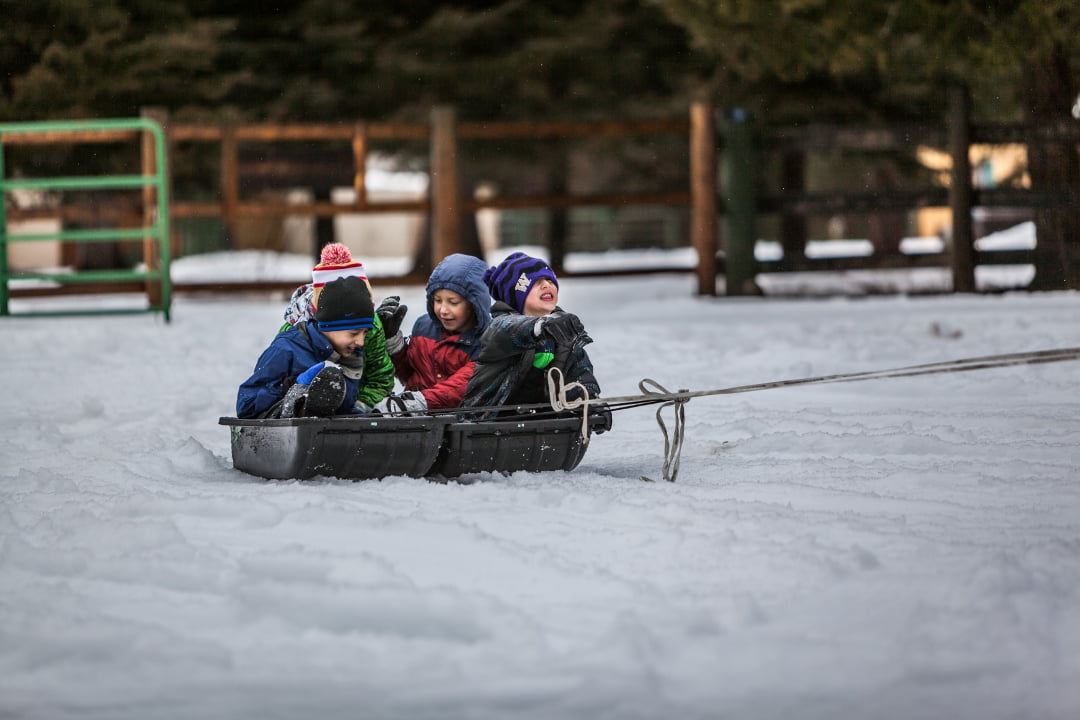Product added to cart
How should you dress a child to go to the snow?

Dressing a child for snow properly is essential for their comfort and safety. In this article, you will find recommendations on the ideal layers of ski clothing for children and the recommended materials, as well as waterproof and breathable outerwear. We will also talk about how to protect their feet and hands, and the importance of accessories such as hats and sunglasses. Additionally, we will address additional considerations and safety guidelines. Discover how to dress your child to fully enjoy the snow with Söll!
Preparing for the Snow: Ideal Clothing Layers
Before children head out to enjoy the snow, it's essential to make sure they are properly dressed to ensure their comfort and protection. To do this, it is recommended to follow a layering strategy that includes a base layer, a mid-layer, and an outer layer.
Base Layer: Recommended Materials and Why to Avoid Cotton
The base layer plays a fundamental role in keeping children dry and comfortable. It is recommended to use synthetic or wool materials, such as acrylic, polyester, wool, and polypropylene, as they prevent moisture buildup on the body. It is important to avoid cotton, as it tends to absorb sweat and increase the risk of hypothermia.
Mid-Layer: How to Maintain Adequate Warmth
The mid-layer for children aims to retain body heat. It is recommended to use thermal clothing pieces such as sweatshirts or wool sweaters, which provide insulation without limiting the child's mobility. Additionally, opting for breathable materials that allow sweat evaporation is useful.
Outer Layer: Protection Against Wind and Moisture
The outer layer is responsible for protecting the little ones from wind and moisture. It is important to choose waterproof and breathable outerwear, treated with a water repellent to maintain its functionality. An adequate ski jacket for children that covers the waist and has easy-to-manipulate zippers is essential to ensure protection against the elements.
Waterproof and Breathable Outerwear
Preparing the little ones with appropriate outerwear is essential to protect them from cold and moisture during the ski season. The following are recommendations to ensure their comfort and safety:
Treatment of Outerwear to Maintain Functionality
- It is important to use outerwear that is waterproof yet breathable to prevent moisture buildup and maintain comfort.
- Additionally, it is recommended to treat outerwear pieces with a water repellent to maintain their functionality and durability over time.
Importance of an Appropriate and Easy-to-Manipulate Jacket
The choice of an appropriate jacket is crucial to protecting children during winter. Some important considerations include:
- The outer coat should be long enough to cover the waist, providing greater protection against wind and snow.
- It is advisable to opt for a jacket with easy-to-manipulate zippers so that children can open and close it easily according to their needs.
Colors and Reflective Elements to Improve Visibility in the Snow
To ensure the visibility of the little ones on the slopes, the following aspects are suggested:
- Choosing outerwear in bright colors will make children more visible, especially in low-light conditions.
- Additionally, it is beneficial for outerwear to have some type of reflective element, such as bands or badges, to further increase visibility and highlight their presence.
Properly selecting outerwear, ensuring it is waterproof, breathable, and functional, as well as in bright colors and with reflective elements, will help keep your children protected and visible during their snow experience.
Protecting Feet and Hands
Recommended Winter Socks and Boots
To keep children's feet warm and dry in the snow, it is important to choose the right socks. We recommend using 100% wool socks or a blend of wool and thermal synthetic material. These materials provide good insulation and retain heat even in wet conditions. Make sure the socks are thick enough but not too tight to avoid restricting blood flow. As for winter boots, they need to be insulated, waterproof, and breathable. Look for ones with a good non-slip sole to prevent slips. Ensure they have enough space for the children's feet to move comfortably, allowing proper air circulation. Remember that boots that are too tight can cause discomfort and even blisters.
Gloves or Mittens with Good Insulation and Waterproofing
To properly protect hands from cold and moisture, it is recommended to use gloves or mittens with good insulation and waterproofing. Look for gloves or mittens specifically designed for snow conditions and that are water-resistant. Choose ones that are padded and have a thermal lining to keep hands warm. Make sure they are large enough for children to move their fingers easily. It is also important that they have an adjustable closure around the wrists to prevent snow from entering and keep hands dry. Remember that mittens are ideal for keeping more warmth inside, as the fingers are together sharing temperature. However, some children may prefer gloves for their greater mobility and dexterity. Choose the option that is most comfortable and functional for each child. For additional protection, consider using thin liners for gloves or mittens. These liners provide an additional layer of insulation and prevent moisture from accumulating on the hands. With the right socks, boots, gloves, or mittens, children will be ready to fully enjoy the snow without worrying about the cold and moisture!
Essential Accessories
Covering the Head and Neck with a Hat, Scarf, or Thermal Neck Gaiter
It is essential to protect the heads and necks of children in extremely cold conditions. To do this, it is recommended to use a hat that covers the entire head, including the ears. It is also important to have a scarf or thermal neck gaiter that covers the neck and can be adjusted properly. These accessories will help maintain temperature and prevent loss of body heat in these sensitive areas.
Importance of Protecting Ears in Very Cold Conditions
Ears are especially sensitive to intense cold, so it is crucial to adequately protect them. It is recommended to use hats that completely cover the ears, preventing them from being exposed to cold and wind. Additionally, there are hats specially designed with thermal linings or ear covers that provide additional protection. It is essential to avoid direct exposure of the ears to low temperatures to prevent possible health problems.
Sun Protection: Sunscreen and Sunglasses
Although snow may create a sense of coolness, it is important to remember that the sun's rays are still harmful, even on cloudy days. Therefore, it is recommended to apply sunscreen with a minimum sun protection factor of 30 on children's faces and lips. Additionally, it is essential for them to wear sunglasses with UV protection to prevent possible eye burns due to the intensity of the light reflected by the snow.
Additional Considerations
Changing Clothes in Case of Excessive Moisture
It is essential to bring additional change of clothes for children in case they get soaked by snow or sweat. When clothes are wet, the body loses heat more rapidly, increasing the risk of hypothermia. It is advisable to have dry clothes to change the little ones into if necessary. This will ensure that they remain comfortable and dry during their experience.
Nutrition and Hydration to Maintain Energy and Health
In a cold environment like ski slopes, it is important to ensure that children are properly fed and hydrated. Cold and physical activity can quickly deplete the body's energy. It is recommended to bring energy-rich food such as cereal bars, nuts, or healthy snacks, as well as a thermos with broth or any hot or warm liquid to maintain proper hydration. This will help maintain body heat and generate energy quickly, ensuring that children have the necessary energy to enjoy their time in the snow.
Safety Guidelines for a Positive Snow Experience
In addition to proper clothing, it is essential to follow safety guidelines to ensure a positive skiing experience. Children should be supervised by an adult at all times, avoiding dangerous areas and staying hydrated. It is important to teach them not to wander too far, to avoid games that may cause injuries, and to be cautious when walking on snow, as there may be obstacles and slippery surfaces. These safety measures will help prevent accidents and ensure that children enjoy their time in the snow safely.
Equipping your children properly to enjoy the snow is essential to ensure their comfort and safety. Söll's ski clothing for children stands out for its high quality, offering optimal protection against the cold and adverse conditions typical of winter sports. With Söll, parents can rest assured that their children will be well-dressed and comfortable, allowing them to fully enjoy the mountain experience, whether skiing, playing, or exploring. Remember, good clothing is the key to ensuring that little adventurers have unforgettable moments in the snow.








